Making room for families in urban housing
When my family and I were looking to relocate to Columbus, the first stops on our housing search were rental and ownership opportunities in and around downtown. Walkability, easy access to cultural events, eclectic restaurant options, exposure to diverse populations and shared resources and distance to work were important to us. More than anything, we loved the idea of the city as our backyard.
When it comes to wanting to live in the heart of the city, my family is not alone. Across the country, people are moving back into cities. From Seattle to New York, Kansas City to here in Columbus, Ohio, there is a boom in the construction of urban multi-unit housing. The Columbus Downtown Development Corporation reports that downtown housing in Columbus is nearing 100% occupancy and $334 million in housing construction is estimated to be in the pipeline (as reported by Hunden Strategic Partners for the CDDC). This is good news for Columbus and it is already happening in many cities nationwide. In addition to the benefits to individuals moving to these areas, urban density has the potential to provide even greater benefit to the community by bringing together diverse members of the populous, making the vibrancy of a city a hub for innovation and creative minds and a center of cultural understanding between diverse populations.

PLANNING FOR THE FUTURE
However, much of this new housing stock, both downtown and in surrounding mixed use developments, has an extremely limited target audience. Today’s logic tells us millennials and empty-nesters are looking to move to more urban environments and families are, as they have been for decades, most happy settling into the suburbs. While targeting this audience has been largely successful, exclusive marketing to millennials could precipitate a decline in the demand for housing in our urban cores, as has been anticipated by some forecasters in recent years. The average millennial age is 25 years old and more and more millennials are expanding their families and thinking ahead for their future needs. Now is the time for developers and city planners to make our growing urban housing stock more diverse to maintain growth and keep our cities lively and healthy. Not only will this increase market stability, it will allow these spaces to grow from areas of transitional housing to places that feel like home, not only to immediate residents but also to the greater metropolitan population.
There are, of course, impediments to economic, racial and cultural inclusivity that must be addressed. Affordability of housing and concern over school funding and quality of education top the list. Columbus is one of the most economically segregated major metropolitan areas in the country. Through collaboration with local governmental agencies, current and potential residents and for and non-profit development partners, this issue must be prioritized and tackled head-on. The Kirwan Institute for the Study of Race and Ethnicity at The Ohio State University is an important local partner and national leader in efforts that support housing equity and inclusion. Through their research, they are able to offer valuable guidance, such as their 2014 report on utilizing the Fair Housing Equity Assessment (FHEA) to expand housing choice and affordability. This report provides a roadmap for developers to collaborate with planners to better utilize the Low-Income Housing Tax Credit (LIHTC) program for purchase of property to be used for development or rehabilitation of affordable housing. One aspect that stands out is the emphasis on promoting low-income mobility to high-opportunity location – those areas with high educational, economic or transit opportunity, such as downtown Columbus. To enable mobility, the report highlights the need to “create standards that prioritize the building of sites for families with children in high-opportunity areas.”
This ties back to my family’s housing search. How did it go? As much as we wanted to find a home downtown, none of the available apartments included a bathtub for us to bathe our son. The targeted demographic is being designed for and marketed to so exclusively that it wasn’t even possible for us to find a downtown option with a bathtub.
Showers are the first tell that a residence is not family focused, but the experience prompted quite a few questions to me as an architect. How can we design urban housing that is more family inclusive? What are families looking for in a home? What could we offer them that they haven’t even thought of yet? How can our cities become a place where people want to stay?
DESIGN STRATEGIES FOR FAMILY INCLUSION
Combined Program
The ability to develop lasting relationships in one’s immediate neighborhood is a major consideration that draws families to the suburbs. While housing density is greater in urban areas, there are fewer opportunities to engage with those living nearby. One way to address this is to offer more shared spaces within urban developments and combine functions to encourage use for each purpose and new ways of using them.
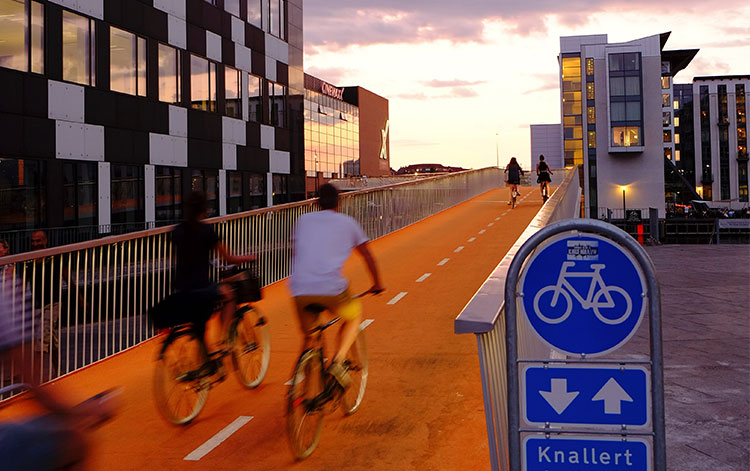
For instance, instead of isolating laundry machines to individual apartments, a shared laundry room could overlook a play area. Or laundry could be combined with a café or arcade. Co-working space could be linked to daycare space. Such offerings could be offered to residents of surrounding buildings with usage or membership fees. Every building doesn’t need to offer every amenity – the strength of density is the ability to provide diverse offerings that benefit both the community and property owner, by way a strengthened desirability of the neighborhood.
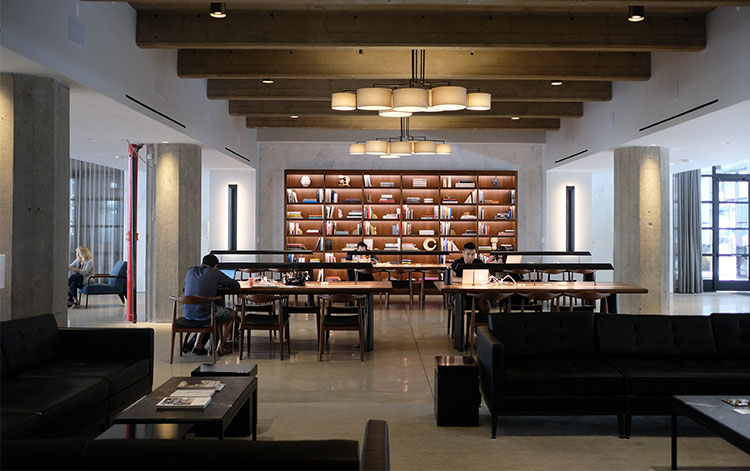
Flexible Spaces
Integration of small home offices can be a flexibly designed asset for residents, whether they are included in the residence or near proximity to it. They can provide the ability to work close to home without working in the living space, which can be especially important for entrepreneurs raising small children as their businesses grow.
Flexibility can also be included within a housing unit. Movable partitions can allow reconfiguration as family size and needs change. Another type of flexibility can be achieved by varying and mixing unit types within a building. This can present an added level of inclusion and collaboration across generations. Varying unit types lends itself to diverse architectural expression of each unit type, contributing an individualized feeling of home within the larger context of building or complex. Exposure to different periods of life can benefit all ages.
Utilize + Create Voids
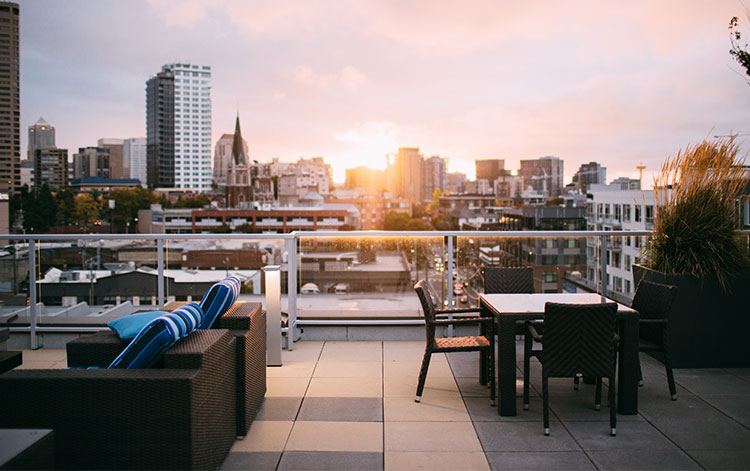
Void spaces can be programmed creatively. For instance, fitting in a ping pong table can appeal to all ages and other imaginative solutions can bring joy to residents and passersby alike. Carving common areas from facades can provide shared outdoor garden spaces while providing daylight to inner corridors. Adding an exterior stair can improve health and connection to the outdoors. These can also be enlarged to provide seating and gathering opportunities. The wide rooftops of parking structures can be reimagined with fitness and play spaces – including mini-soccer fields, multi-use gathering spaces and urban croquet.

Green Spaces + Play Spaces

Both private and public outdoor spaces are important to families as they grow and change. By varying the size and degree of exposure, green spaces can provide experiences for both the introvert and extrovert, for quiet moments and active family gatherings.
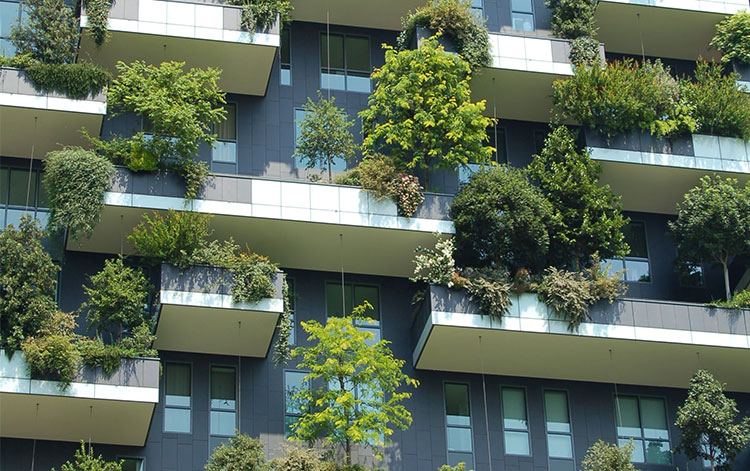
Outdoor spaces can incorporate urban orchards and planting beds, coveted features often missing in urban environments. Offering a community treehouse could reassure parents that their children will remember their home fondly. Working together with city planners, unused and in-between spaces can be utilized in endless ways for imaginative play spaces.
COLUMBUS, MOVING FORWARD

Coupled with utilization of family inclusive design, we can also learn from urban areas outside of the downtown’s traditional boundaries. Some of our most vibrant areas of diversity and entrepreneurship – the drivers of our future – are located in areas outside of the extensive development that Columbus has seen in recent years.
An area that families from around the world, including my family, decided to call home is an example of this potential. By embracing diversity, supporting small business and strategic reuse of the defunct Northland Mall and a myriad of nearby retail strips, the Northland area has seen itself reborn as a hot bed of entrepreneurship. The immigrant community has established a thriving restaurant and retail base. The neighborhood’s current business to square mile ratio is greater than that of New York City, situated with its corridors of high business density directly adjacent to a diverse range of housing for the neighborhood’s 130,000 residents. While the area would benefit from upgraded infrastructure to improve walkability to and through the commercial corridor and to nearby parks, the proximity of residents of all ages and walks of life to employment and diversity of retail and restaurant options is a formula to be mined as developers and city officials make decisions about the future of downtown.
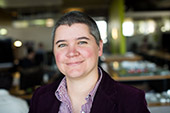
Jen Gilmore // Project Architect
Jen’s work as a Project Architect is inspired by research and travels throughout Asia coupled with a passion for the built environment. Her depth of experience includes design of libraries, multi-unit residential high-rise developments and adaptive reuse spaces. Jen endeavors to instill some fun into her work, with an emphasis on contextually driven projects and material exploration.
